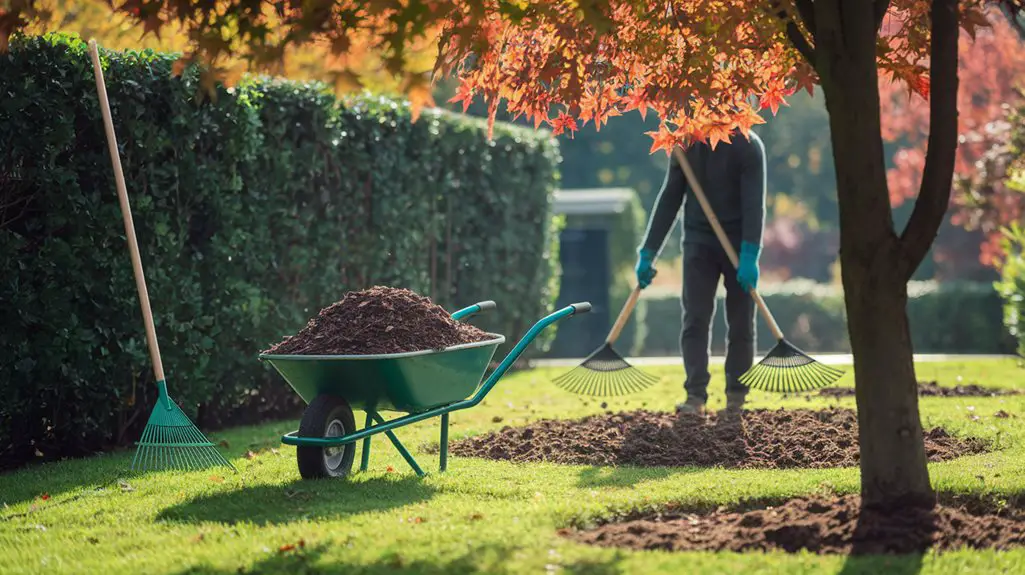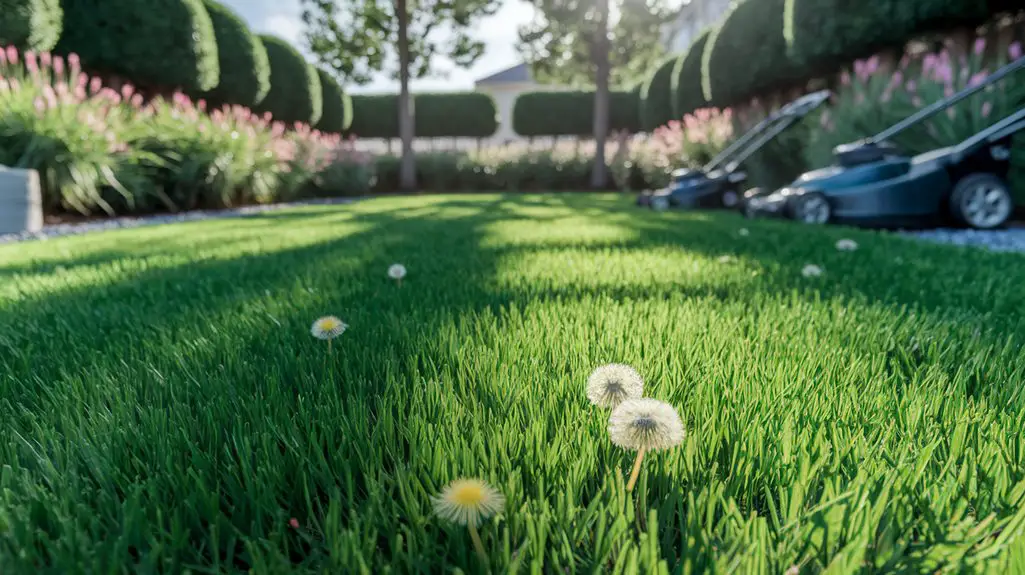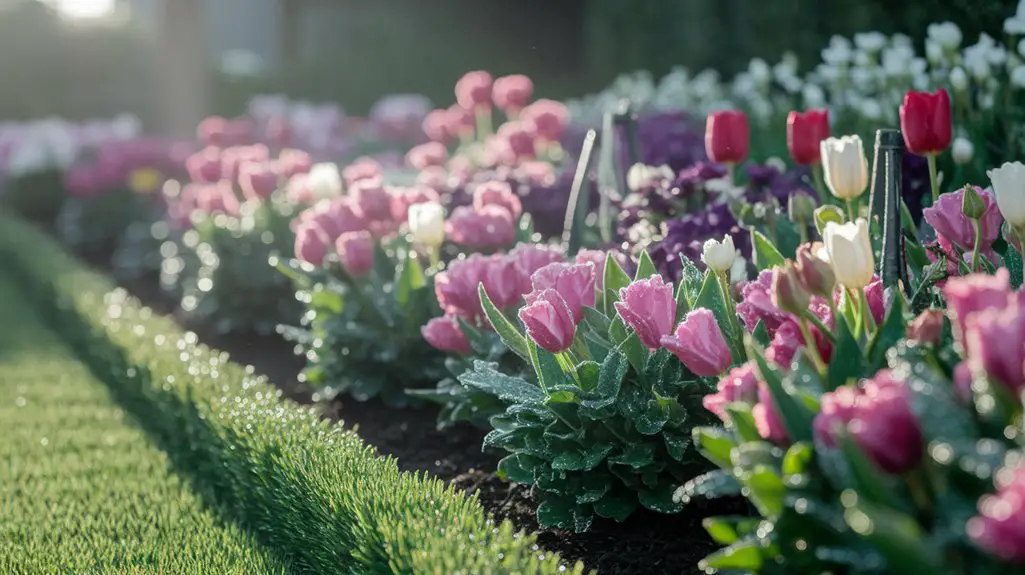Your lawn faces unique challenges as temperatures drop and days shorten. You’ll notice slower grass growth, but don’t mistake this for dormancy—fall presents a critical window for strengthening your turf’s root system before winter stress. Proper autumn care determines whether your lawn merely survives or thrives next spring. While many homeowners neglect their yards this season, implementing these five strategic practices will set your lawn apart from the neighborhood’s declining greenery.
Aerate Your Soil for Better Nutrient Absorption
Three critical factors make fall aeration a necessity for maintaining ideal soil health.
First, summer foot traffic compacts soil, reducing oxygen circulation to root systems and impeding water penetration.
Second, thatch accumulation—that layer of dead grass between soil and living blades—exceeds 1/2 inch thickness by fall, creating a barrier to nutrients.
Third, fall’s moderate temperatures provide favorable conditions for recovery and root development before winter dormancy.
You’ll need a core aerator that removes 2-3 inch soil plugs rather than simply puncturing.
Space holes approximately 2-3 inches apart, focusing on high-traffic areas.
This process increases microbial activity, enhances fertilizer effectiveness by 40-60%, and improves water infiltration rates by creating channels through hydrophobic soil layers.
Aeration also reduces runoff and stimulates deeper root growth for improved drought resistance. Additionally, proper lawn care practices during the fall can significantly enhance your lawn’s resilience against winter conditions.
Apply a Fall-Specific Fertilizer Blend
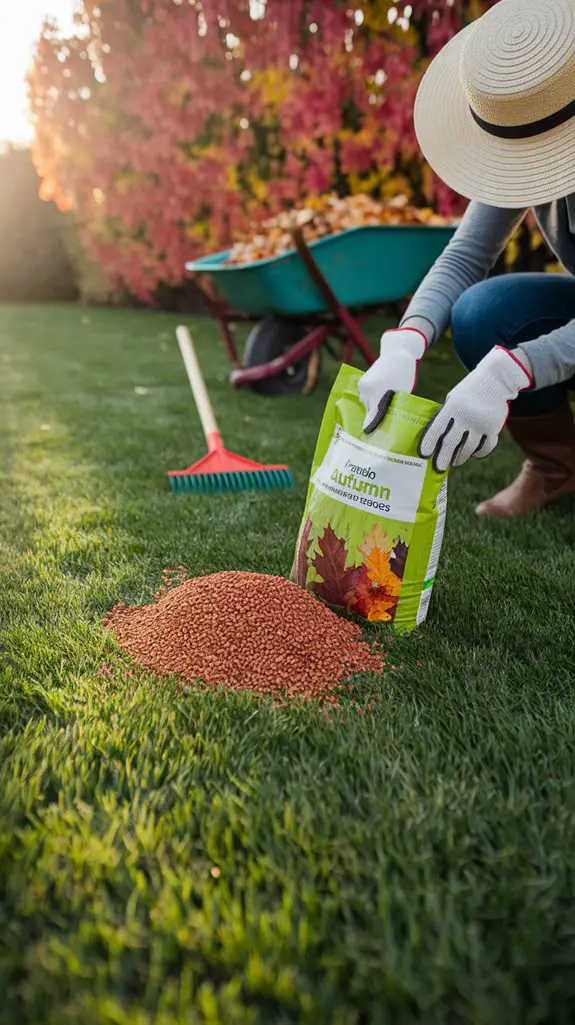
While summer fertilizers prioritize nitrogen for blade growth, fall-specific fertilizer blends feature different nutrient ratios optimized for root development and energy storage.
Look for formulations with higher potassium (K) and phosphorus (P) content, typically labeled with lower first numbers in the N-P-K ratio (e.g., 10-12-20).
Apply fertilizer when soil temperatures remain above 55°F but grass growth has slowed. This timing guarantees nutrients are directed toward rhizome development rather than excessive blade elongation.
For cool-season grasses, select products containing controlled-release nitrogen compounds like sulfur-coated urea or IBDU. These compounds provide sustained nutrition throughout dormancy periods.
Calculate application rates based on your lawn’s square footage, avoiding over-application which can lead to nutrient runoff and potential waterway contamination.
Water thoroughly after application to facilitate soil integration.
Continue Mowing at the Right Height
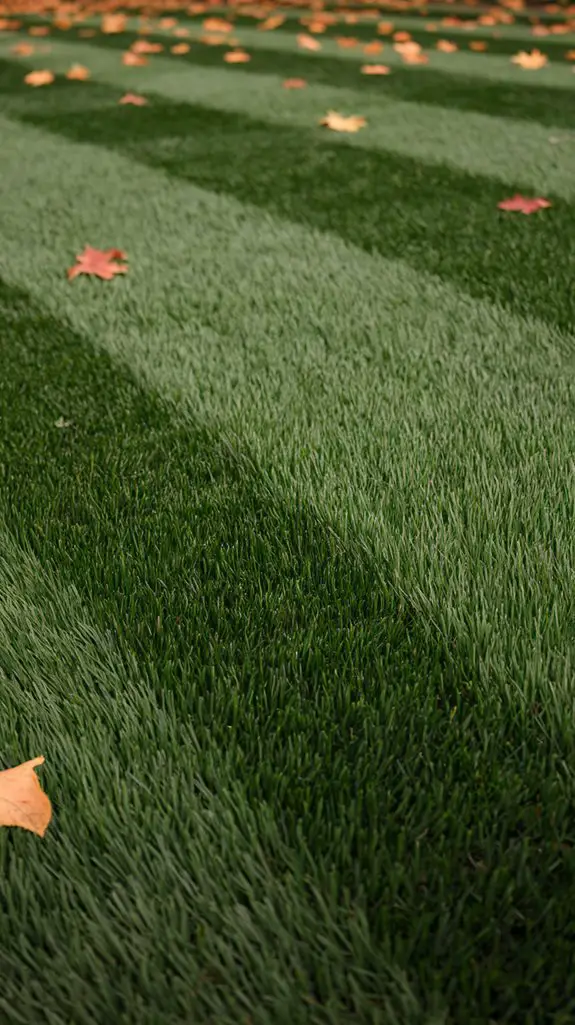
As temperatures decline in autumn, proper mowing height becomes critical for lawn resilience and winter survival.
Maintain cool-season grasses (Kentucky bluegrass, fescue) at 2.5-3.5 inches—taller than summer height—to enhance photosynthetic capacity and root development before dormancy. This increased height provides insulation against frost damage and prevents crown desiccation.
Don’t reduce height abruptly; gradually lower cutting height with your final mow at 2 inches to prevent snow mold development.
For warm-season grasses (Bermuda, Zoysia), maintain at 1.5-2 inches to reduce thatch accumulation. Ascertain blades remain sharp to create clean cuts that heal efficiently and minimize moisture loss.
Always follow the one-third rule: never remove more than one-third of grass height in a single mowing session to prevent physiological stress and nutrient depletion.
Remove Leaves and Debris Regularly
Beyond proper mowing practices, leaf management represents a fundamental component of effective autumn lawn care protocols. You’ll need to implement systematic debris removal to prevent smothering your turfgrass and inhibiting photosynthesis. When leaves accumulate, they create moisture-retention zones conducive to fungal pathogens and pest habitat formation. Additionally, the presence of leaves can attract natural pest control methods that could disrupt your garden’s ecosystem.
| Leaf Density | Removal Frequency | Tool Selection | Collection Method | Impact on Turf |
|---|---|---|---|---|
| Light | Weekly | Rake | Compost | Minimal stress |
| Moderate | Bi-weekly | Leaf blower | Municipal pickup | Moderate risk |
| Heavy | Every 3-4 days | Vacuum system | Yard bags | High risk |
| Wet leaves | Immediately | Power rake | Mulching | Severe damage |
| Post-storm | Within 24 hours | Combination | Disposal service | Recovery phase |
Don’t delay removal operations when accumulation reaches 50% coverage of any lawn section. Mulching leaves with your mower represents an efficient alternative that returns organic matter to the soil profile.
Overseed Bare Patches Before the First Frost
Identifying and addressing bare patches through strategic overseeding during fall constitutes a critical intervention for turfgrass restoration before winter dormancy.
Fall’s combination of warm soil and cooler air temperatures creates ideal germination conditions while reduced weed pressure enhances seedling establishment. Additionally, ensuring proper lawn care maintenance aids in the overall health of the soil, which can further benefit your vegetable garden.
- Select cultivars appropriate for your climate zone and shade conditions (Kentucky bluegrass, tall fescue, perennial ryegrass)
- Scarify soil surface to 1/4 inch depth using a rake or mechanical dethatcher
- Apply seed at 150% of standard application rate to compensate for germination inefficiency
- Incorporate starter fertilizer (high phosphorus, NPK ratio of 5-10-5) to stimulate root development
- Maintain consistent soil moisture (0.25 inches twice daily) until seedlings reach 2-inch height
Apply seed when soil temperatures remain above 50°F (10°C) for successful establishment before winter dormancy onset.
Conclusion
By implementing these five critical fall lawn care practices, you’ll create an environment where your turf’s rhizosphere can flourish despite winter’s dormancy period. Like Persephone’s annual descent, your grass requires this preparatory phase to emerge vibrant in spring. The strategic combination of mechanical aeration, species-specific fertilization, precise height maintenance, thatch prevention, and targeted overseeding establishes ideal conditions for cellular dormancy and subsequent regeneration when temperatures rise again.

